Finding the best solar inverter can be troublesome, especially for new solar owners. In this article, we make the process much simpler by providing a comparison of the top 5 inverters.
We look at the functions, types, sizes, and other key performance metrics you can use to choose the right inverter for your solar system.
| Feature | MUST PH18-5248 PRO | Mecer Axpert VM 5000-48 | Phocos PSW-H-5KW-230/48V | Growatt SPF 5000 TL HVM-48 | Victron MultiPlus-II 48/5000/70-50 GX |
Remote monitoring (Wifi) | YES | YES | YES | YES | YES |
| Parallel connectivity | 6 units | 6 units | 9 units | 6 units | 6 units |
| LCD display | YES | YES | YES | YES | YES |
| Surge/Peak Power | 9000W | 10400W | 10000W | 10000W | 10000W |
| Maximum Efficiency | 96% | 93% | 93% | 98% | 93% |
What Does An Inverter Do?
Before we dive into specifics, let’s first understand what an inverter does. The primary function of a solar inverter is to convert the direct current (DC) produced by solar panels into alternating current (AC) used by your appliances.
Most home appliances run on AC so essentially you cannot use solar panels without an inverter to convert DC to AC energy.
Inverter/Chargers
An inverter simply does a DC to AC-conversion. An inverter/charger converts DC to AC and can charge a battery using an AC source. An AC source could be your mains or a generator.
This is an especially useful feature if you need to charge your batteries and your solar panels are not producing enough energy as on a cloudy day for example.
Can Any Inverter Be Used for Solar?
Solar inverters are designed to handle the fluctuating power output of solar panels, perform MPPT, communicate with the grid, and manage other complexities of a solar power system.
A regular inverter is a more generic device used to convert DC power into AC power in any system that generates DC power, not necessarily a solar power system. Using a regular inverter instead of a solar inverter in a solar system can lead to inefficient power conversion and potential damage to the system.
Types of Solar Inverters
There are several types of solar inverters, each designed to suit different types of solar power systems. The primary ones include Grid-tie inverters, off-grid inverters, and hybrid inverters.
Grid-Tie Inverter
A Grid-tie inverter, also known as an on-grid inverter, is used in a solar system that is connected to the utility grid. It converts the DC power generated by the solar panels into AC power and feeds it into the grid. The main advantage of a grid-tie inverter is that it allows you to feed excess power back to the grid, earning you credits on your electricity bill.
Off-Grid Inverter
An off-grid inverter is used in a solar system that operates independently of the grid. Off-grid inverters require a battery backup to function, storing the excess power produced during the day for use during the night or cloudy days.
Does this mean all inverters require a battery? Not necessarily. Both grid-tie and hybrid inverters work without a battery. The only difference is the energy they convert is for immediate use. Without a battery, the system cannot store energy.
Hybrid Inverter
A hybrid inverter is a versatile device that combines the functionalities of both grid-tie and off-grid inverters. It can feed power into the grid, draw power from it, and also charge and draw power from a battery system. Hybrid inverters are ideal for solar-plus-storage systems and provide enhanced energy independence.
Leading Inverter Manufacturers
Several leading manufacturers produce high-quality solar inverters. These include Must, known for their reliable and affordable products; Victron, reputed for their advanced technology and robust build; Phocos, appreciated for their high efficiency and durability; Mecer, loved for their user-friendly designs; and Growatt, renowned for their wide range of options catering to various solar system sizes.
Must
Must inverters are relatively new on the market and are not as well-established as Growatt or Victron. Shenzhen MUST ENERGY Power Co is a Chinese company that produces a wide range of off-grid, grid-tie, and hybrid inverters for residential and commercial use.
The biggest advantage of Must inverters is without a doubt the price. These are some of the cheapest inverters that still provide reliable performance.
Must inverters have generally positive reviews with buyers highlighting their versatility and quick changeover from mains to solar in the event of a blackout.
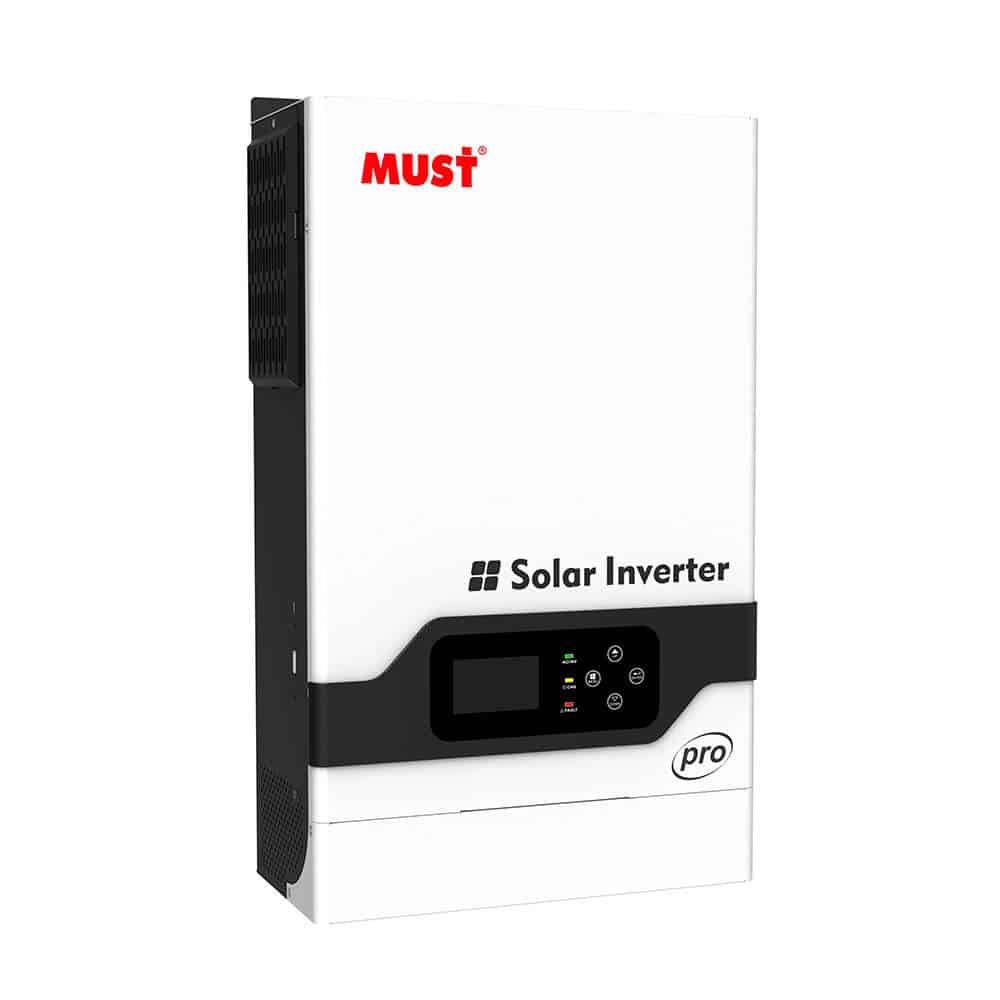
Pros
- Reliable and affordable
- Wide range of models to choose from
Cons
- Limited advanced features compared to something like a Victron inverter
Our pick for affordability. Their inverters are made for the budget-conscious buyer who wants a decent level of quality.
Mecer
Mecer is a South African brand owned by Mustek, an IT products and solutions provider. If you’re worried about buying an inverter from a computer company, you shouldn’t be.
Mecer inverters are known for being one of the most reliable. They have a wide range of models in various capacities, from as low as 600VA to as high as 10kVA. A top feature that has earned them great reviews is just how easy they are to use. Mecer inverters are some of the easiest to program.
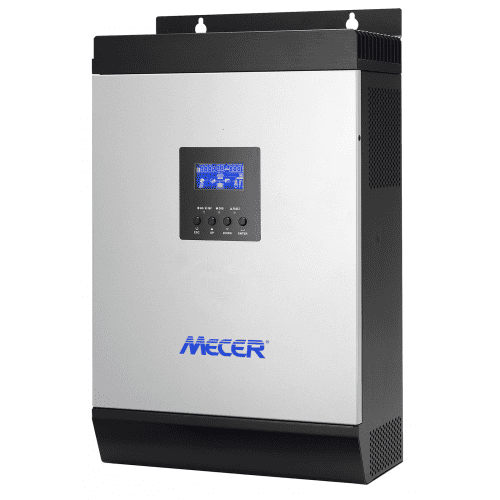
Pros
- User-friendly designs and features
- Good performance and reliability
- Affordable pricing
Cons
- Limited advanced features
Our pick for user-friendliness. If you are looking for a no-frills inverter that’s easy to use.
Phocos
If you have a soft spot for German engineering then you will definitely want to look into getting a Phocos inverter. Their Any-Grid inverter/charger series is a range of hybrid inverters.
Whereas most inverters allow you to connect up to six inverters together to increase the power output, Phocos lets you connect up to nine. We should point out that the largest Phocos inverter only provides 8kW, however.
A very useful feature of the Phocos is it allows you to set the priority of energy source with automatic switching between solar, AC (mains or generator), and battery.
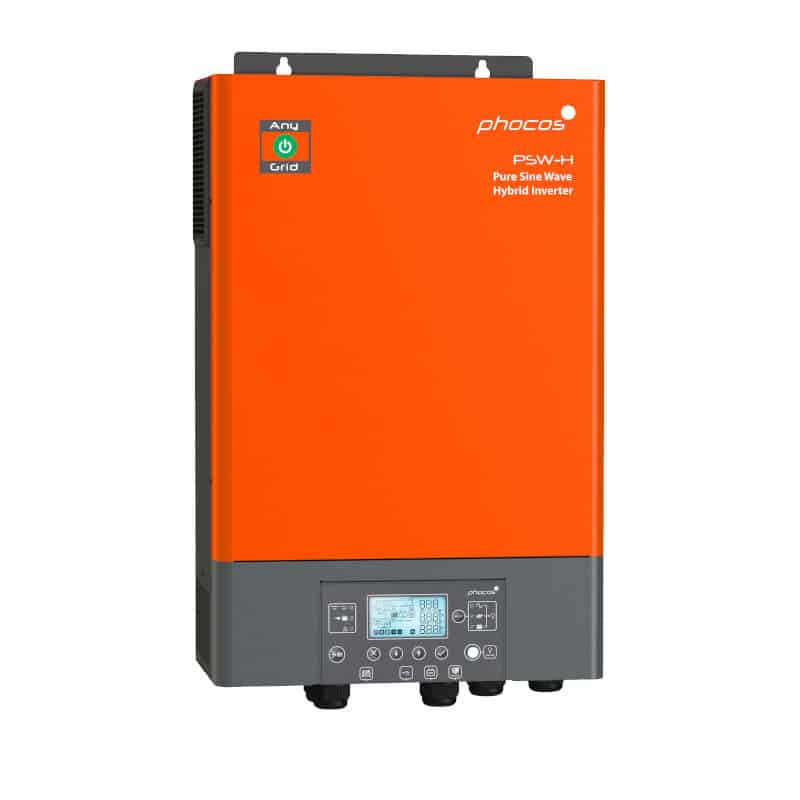
Pros
- High efficiency and durability
- Easy to install and use
Cons
- Smaller range of models
- Not suitable for large-scale solar systems
Our pick for durability. Phocos gives you a German-designed inverter at a reasonable price.
Growatt
Growatt has built a reputation as a company with excellent support in countries where it has a physical presence. Like the Phocos, a Growatt inverter allows you to select which energy source to prioritize.
Growatt inverters range in size from 0.75 to 15kW and can be used in residential, and commercial applications. It’s also one of two, the other being Victron, inverters in this list that are used for industrial applications.
One of the features users point to in reviews is its silent operation under heavy load.
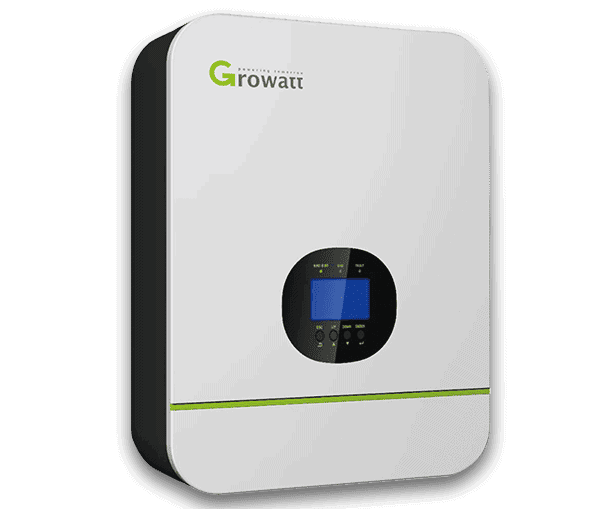
Pros
- Wide range of options for various system sizes
- High efficiency of up to 98%
Cons
- Difficulty connecting and using the Growatt app
Victron
Having been in operation since 1975, Victron is the longest-running and most expensive inverter on this list. Based in the Netherlands, Victron produces batteries and charge controllers as well as inverters.
Like Growatt, Victron inverters come in a wide range starting as low as 0.5kW and reaching 15kW. Due to their popularity, these high-quality inverters are compatible with almost any other system components from other brands.
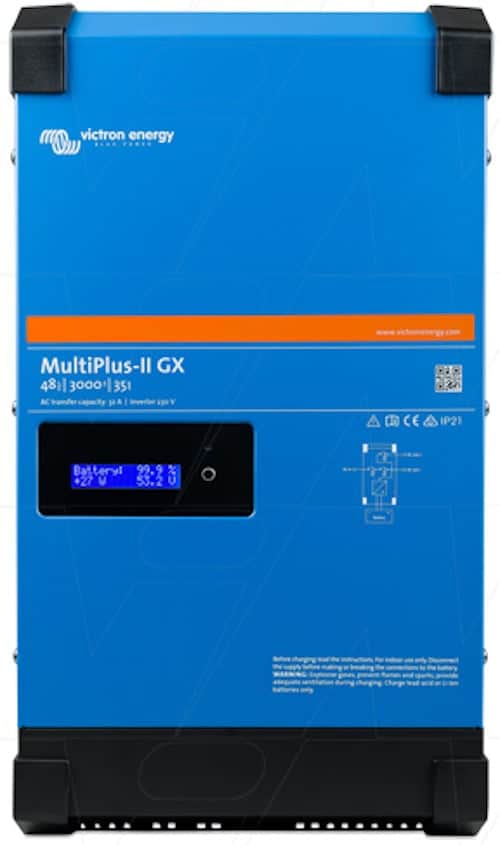
Pros
- Advanced features like PowerAssist (prevents overloading)
- Robust design
Cons
- Highest cost compared to some other brands
- May require professional installation due to complex features
Our pick for quality. While it is the most expensive inverter on our list, Victron is a well-respected brand recognized for producing quality components.
Overall pick: Mecer inverters offer the best balance of reliability, ease of use, and affordability for most first-time solar owners. Growatt is a close second as it is not too far off in price.
While Phocos and Victron might offer more in terms of reliability, they are on the more expensive side. Must inverters will be the most obvious choice for a thin budget.
Solar Inverter FAQs
Do All Solar Systems Need An Inverter?
Typically, yes. As most appliances run on AC energy, a solar inverter is necessary to convert the DC energy from solar panels into AC energy.
Can You Use A Solar Panel And Inverter Without A Battery?
Solar systems can be run with or without batteries. A battery provides energy storage and allows for the use of solar energy at night.
Which Size Is Best For Your Home?
Inverter sizing is a function of the system or input from the solar panels. The size of the inverter should match the total capacity of the solar panels. For example, if the solar panels produce between 1000 to 2800 watts, the logical inverter size would be a 3kW inverter.
How Does An Inverter Work Without Solar Panels?
A feature of inverter/chargers is that they work using AC energy sources. This can be electricity from the utility (mains) or from a generator.
Where Is The Best Place To Put A Solar Inverter?
Inverters should be placed in a well-ventilated, dry, and cool area, preferably indoors to protect them from harsh weather conditions like heat from the sun. Heat reduces the lifespan of an inverter. It’s also a good idea to locate them away from living areas as inverters can make a substantial amount of noise.
Is Maintenance Necessary?
Solar inverters typically come with diagnostics and indicators to alert users of any issues, making maintenance easier. Aside from cleaning and ensuring proper ventilation, inverters do not require much maintenance.
What To Look For
The critical factors to consider when buying an inverter are the type and size. Hybrid inverters are quickly becoming the default option as they are versatile enough to fit any system design. Size is a factor of the total solar panel capacity.
Other factors to consider are:
- Ease of use. An LCD display really helps for showing status information and programming the inverter.
- Connectivity. Having an inverter that is WiFi or Bluetooth enabled is useful for remote control and monitoring.
- Tutorials/User guides. Manuals and guides can be very critical for troubleshooting and error correction.